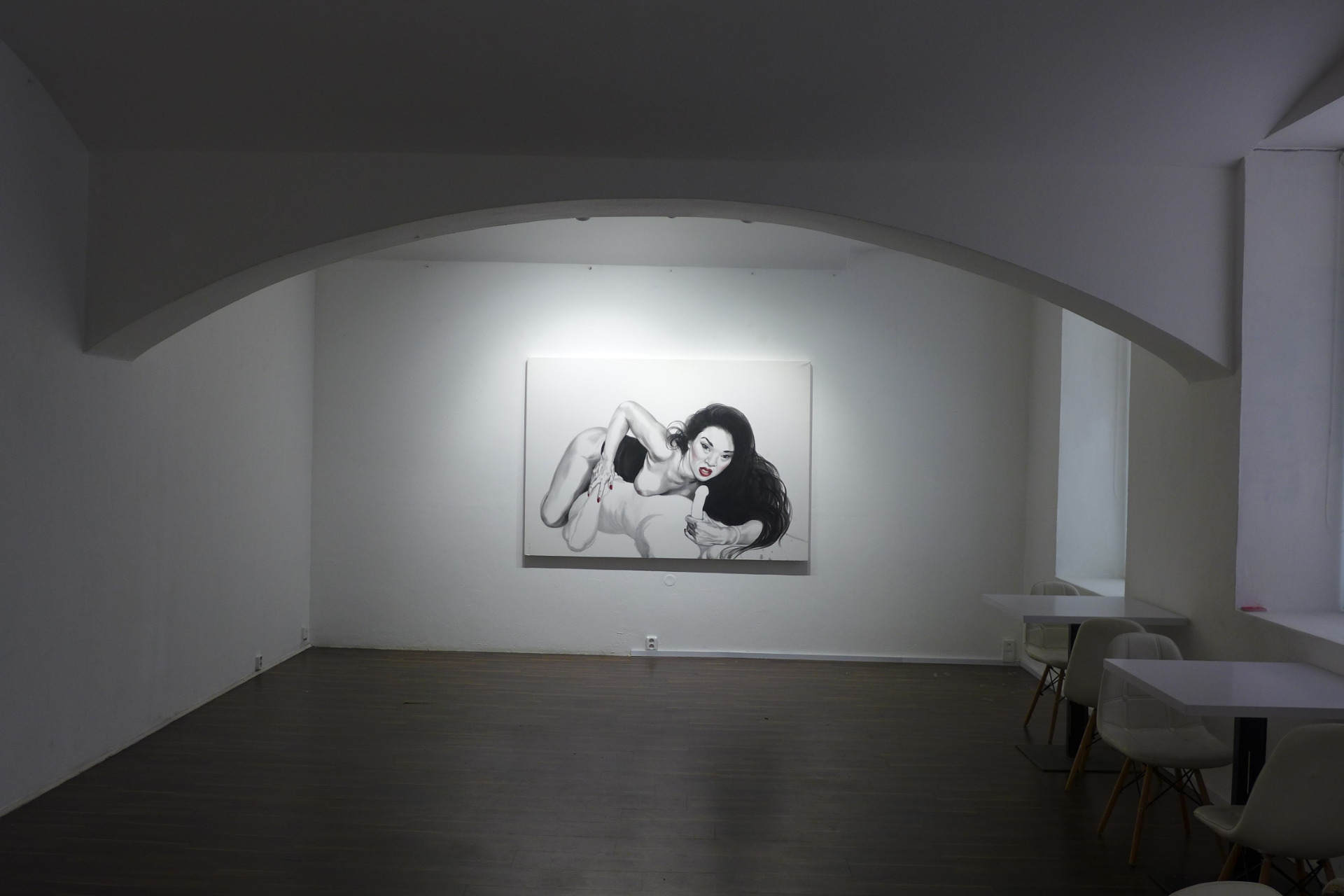Flowers in a sea of evil - Nová galerie
2.5. - 21. 6. 2017
Almost every fifth person on the planet is Chinese. Yet, how many Czechs who have lived in China for more than twenty years do you know? In my opinion, staying in such a different country is an adventure; however, for a person who has studied the culture and history of China, like Jiří Straka has, it is part of the natural progress. Apparently, it is not difficult to be metropolitan in today's world, especially if you can speak the language and understand the customs of the country you choose. Central Europeans look up to Chinese culture with respect. Even though international history was not taught in schools during the socialist era, my generation is aware of Chinese porcelain, the inventions of paper, gunpowder and the compass, the construction of the Great Wall of China, Chinese medicine and philosophy, Chinese ink painting and so on. Unfortunately, we are also aware of the contemporary political aspects of communist China which spoil the legacy of this advanced civilization. We are informed about political trials, executions, ecological issues and poor ghetto-like villages. We perceive the economic investment pressure and associate it with the infamous steps taken by our president. Occasionally, a Chinese artist comes, for instance Ai Weiwei as the last one. He showed us the Chinese Zodiac or a refugee boat. On another occasion, the Chinese president arrives and we can only stay alert. We cannot escape globalization and we don't want to surround our country with a great wall.
An individuality of Jiří Straka's kind cannot stay indifferent to present day contradictions. On the one hand, he respects the tradition of Chinese ink painting; on the other, he rewrites the visual perception in a manner that has been encoded in us since the Renaissance. As Jiří Straka put it in his email: "The more I think about it, the more I view ink painting as a traditional, rigid medium, idealized and burdened with lots of cultural layers and stereotypes. Furthermore, it is being used and abused by the political leaders as a form of true original Chinese art. Historically, this medium has been burdened with the Confucian idea that art, and particularly ink painting, should serve for the moral cultivation of man. In my case, it becomes an obsolete, surviving medium used in an unexpected, and for a Chinese consumer totally inappropriate, manner. It is this combination of the aforementioned medium and the chosen subject (shocking for Chinese viewers) that I find amusing."
European visual perception rectified by Chinese culture, ink painting revised in postmodern painting. These opposites get integrated like subatomic particles. What is the final result? What is the central code of Straka's painting? There are two more aspects to it: one is formal and the other is moral. If we look at the paintings of prostitutes we cannot miss the similarity to comics, especially those in Hentai and Manga styles. This similarity does not come only with the subject of erotically defined women but also in its execution, in simplifying the shape and in work with light and modelling. Such simplification can also be found in the works of old Chinese masters as well as in Manga style drawings. Jiří Straka is interested in corporeality; the subject is depicted on a white background similarly to the ancient masters' paintings of flowers and birds. He has mastered the ink brush technique and is able to push the ordinariness of the present moment to the eternity of existence. However, instead of moral cultivation through floral motifs or landscapes we are presented with our understanding of today's issues. Tradition serves the present allowing us to view the times in which we live in a timeless manner.
The subject of these new paintings offers a second contemplation on deciphering the images. Prostitution is probably an issue in most rapidly growing economies. All the little massage salons are said to flourish mostly near new construction sites. Enormous numbers of workers are involved in building high-rise constructions staying in lodging houses often very far from their families. No wonder prostitution thrives there. In his paintings, Straka observes without criticizing. Emotions arise when we imagine the life stories of these women and the economical distress that had pushed them into their situation. In my doctoral thesis, I researched the criteria of quality in art found in contemporary works not yet recorded in art history, which may become confusing. Besides the classical criteria such as authenticity, originality and realism I described communication strategies through which artists seek the extreme limits for their expression or for describing reality. In this way, new excessive values are reached which get burnt into our memory redefining our moral patterns. I believe that Jiří Straka is attacking these extreme limits by combining the alleviated depiction of women in erotic poses with their social status that can be sensed beyond the exterior. In the exterior, that is, on the women's skin, the brutal and vulgar violence that these women experience in their work is decently insinuated.
Pavel Humhal, Prague, April 2017
only available in Czech language
only available in Czech language
